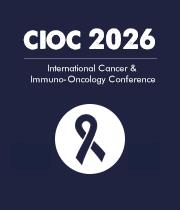Title : One-step salivary gelatinase activity assay: Accelerating non-invasive oral malignancy diagnosis
Abstract:
Matrix metalloproteinases (MMPs), notably the soluble gelatinases MMP-2 and MMP-9, are central to extracellular matrix remodeling and are frequently dysregulated during tumor invasion and metastatic progression, making them attractive biomarkers for early detection and prognosis of oral malignancies; however, commonly used immunological assays (IHC, ELISA, western blot) fail to discriminate active enzymes from inactive zymogens, limiting clinical specificity. To address this gap, we evaluated a novel, one-step, rapid and cost-effective salivary gelatinase activity assay as a non-invasive screening tool. In a prospective study of 572 participants—333 healthy controls (Group A), 111 patients with premalignant oral lesions (Group B; leukoplakia, erythroplakia, lichen planus, submucous fibrosis) and 128 biopsy-confirmed oral cancer patients (Group C)—unstimulated whole saliva was centrifuged and 125 µL of supernatant applied to a bespoke device comprising three sequential gelatin layers (0.1 mm thickness, 5 mm spacing). Following a 15-minute incubation at 37 °C, gelatinolytic activity was quantified by the number of layers digested and categorized as low (0–1 layer), moderate (2 layers) or high risk (3 layers). The assay demonstrated outstanding diagnostic performance, achieving 99.2% sensitivity and overall accuracy, with negligible false-negative rates in premalignant and malignant cohorts and zero false positives among healthy controls. Beyond high analytical performance, the method directly measures enzymatic activity (thereby distinguishing active MMPs), requires minimal sample processing, yields results within minutes, and is amenable to point-of-care deployment and large-scale community screening. These features position the assay as a practical tool for early detection, risk stratification and longitudinal monitoring of oral/head-neck cancers, particularly in resource-constrained settings where non-invasive, rapid, and affordable diagnostics can substantially improve timely referral and clinical outcomes.



